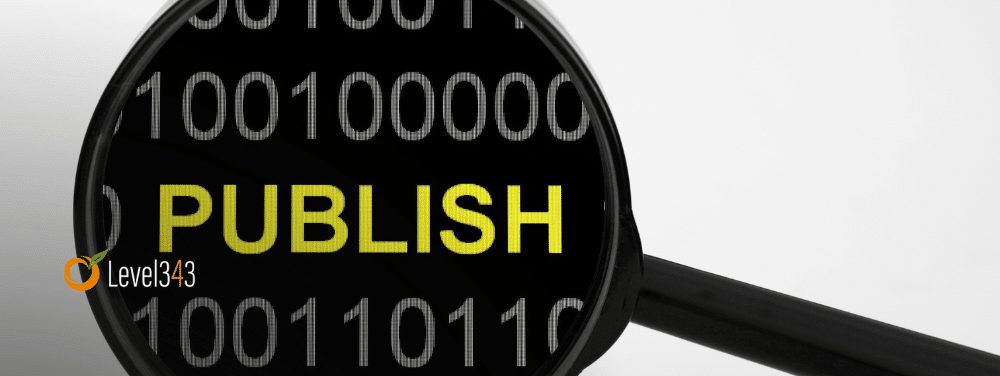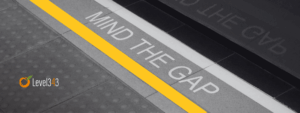Any time you sit down to write, you have a set of priorities and steps to go through. You have a campaign, a purpose – a raison d’être – for the content (a goal that has to be measured with trackable benchmarks, for instance). You aren’t just writing to be writing… right? You’re writing to sell your products. You’re writing to bring publicity to your site. You’re writing because content brings traffic, traffic means visitors, and visitors means possible conversions.
Your most important priority is deciding what to write, based on your content’s goals. What goals do you want to attain? What topics will help you achieve that goal? What type of content has your research shown produces the best returns? Answering these questions will help you find your topics.
Once you’ve passed that milestone, the big challenge is coming up with multiple ideas your readers will find interesting and informative. After all, no matter how big a topic is, you’ll eventually end up with overlapping content. You want to make sure it overlaps in a way that seems complimentary rather than repetitive.
With all this in your head, you sit in front of your computer and pound away on the keyboard. At the end of the day, you often ask yourself, “Where did the time go?” You’re ready to stop for the day. You’re ready to publish – or, at the very least, schedule – the posts you worked so hard on.
Wonderful, but before you hit that publish button, take some final (and important!) steps:
#1: Make sure all your links work
If you add links to your posts, make sure they work properly. Test each one separately and confirm it goes to the proper page. It’s quite annoying to click on a link and either nothing happens or it takes you to the wrong page.
Make sure your links open in a new browser window. This allows visitors to your site to read the external links without clicking away from your site. Some will disagree with me. “Give the user a choice,” they’ll say. Nevertheless, I want to make sure they have to work at leaving my site (because clicking that “x” that closes the tab is so hard, don’t you know). I also want to make sure they don’t have to work to stay on my site and still read the good links I send their way. It’s a win win!
#2: Avoid annoying grammar and spelling mistakes
No one likes to read a poorly written article, especially posts with grammar and spelling errors. Take the time to read it aloud to yourself; carefully review your articles while checking for spelling and grammar errors.
It’s always a good idea to take a break after writing and then go back to re-read the piece with a fresh pair of eyes. Better yet, have someone you trust check your work. Take the extra time to check and double-check BEFORE you hit that publish button.
This is especially important for first time visitors to your site. Give them a reason to come back. You may want to check out this awesome tool (http://grammarist.com/ .) to review grammar and spelling rules. Make sure your writing is the best it can be; it provides a better experience for readers and shows you care about what you put online.

#3: Give credit where credit is due
Most bloggers don’t use their own images; not everyone has the time to go out and take photos, or create original drawings. Most either buy their images or use images they “borrow” from the Internet.
If you are one of those bloggers, make sure you give credit to the owners of the images you use. Check the copyright and usage rules of any images you use. You never want to be accused of stealing. Aside from images, if you use stats or info-graphics, always link back to the original source and give proper credit by adding the name of the owner.
#4: Don’t be lazy – tag your post
Tags make it easier for your readers to find posts about a specific topic on your site. Many writers take tagging for granted and don’t bother. Big mistake! Using specific keywords that describe your post is helpful for effective SEO, true, but it’s also extremely helpful to the reader, because it gives a mini word cloud summary of the post.
In short, tags are the answer to, “summarize this post in three words or less.” Choose your words carefully. Make sure the keywords you use are relevant to your article. Separate each keyword with a comma. Example: tag any photographs with the word “photography” or your travel posts with the word “travel.” You get the idea.
#5: Optimize your images
Most writers put a lot of effort into their writing, but forget to optimize their images for maximum SEO benefits. You may not know it, but your images can get you tons of traffic. Here are some steps you can take to better optimize your images:
– To insure your site loads quickly and visitors don’t click away too soon, keep your images reasonably small. Remember, the size of your images has a direct impact on the load time of your site.
– Use quality images and ones that are closely related to your post.
– Include captions and descriptions. Write proper descriptions to avoid or reduce bounce rate.




































3 Responses
Really I’m very weak about it but i want to publish article. So, your these 5 tips is very helpful to me. And I’ll learn it and try to do next.
People is not perfect because They are man not god but A bloggers should have very fantastic knowledge about grammar.it will be very annoying if there are some mistakes like that.Bloggers should eject this type of faults.
Having grammatical mistakes in the article is very annoying and it is my top most priority if i am going to publish and article.The errors in grammar are not at all tolerated.